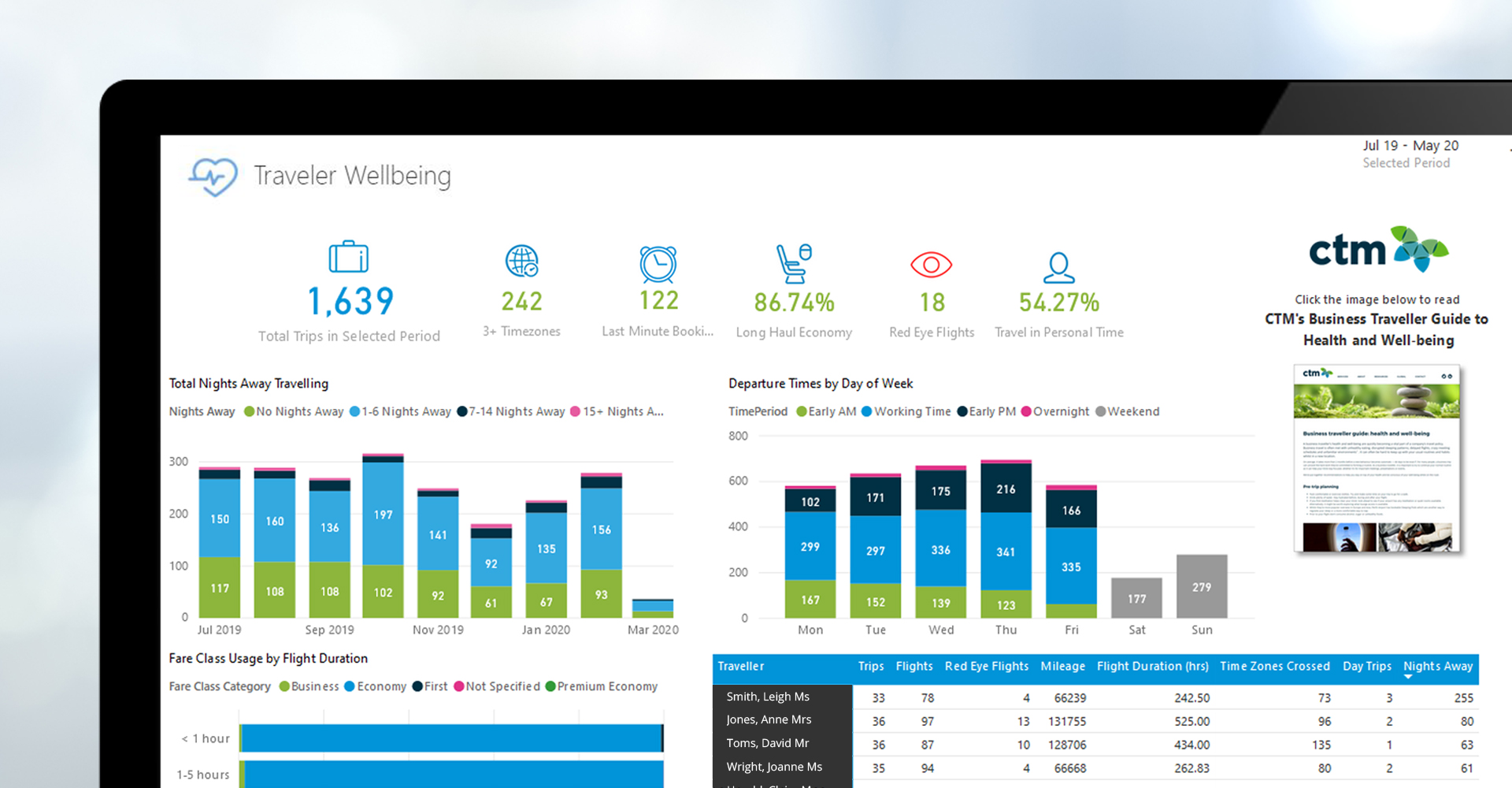

Traveler Wellbeing
Optimize travel behavior and identify potential triggers of traveler stress within your travel program for enhanced wellness and duty of care.
Corporate Travel Management (CTM) is committed to designing bespoke travel solutions that will positively influence travel behavior to support employee wellness, enhance duty of care, and maximize productivity and travel program performance.
Looking to enhance the wellbeing of your travelers?
Optimize travel behavior for enhanced duty of care
CTM understands the importance of traveler wellbeing when designing and delivering a responsible and highly effective corporate travel program for your business. As such, we have developed an intuitive and easy-to-use Traveler Wellbeing dashboard within the CTM SMART Data reporting tool, enabling Travel Managers to identify travel behaviors and trends which could impact the wellbeing of your travelling workforce.
Wellbeing Reporting
CTM’s Traveler Wellbeing reporting tool enables users to view consolidated travel program data as well as dissect data down to individual traveler level across a broad range of travel metrics, including:
- Number of nights away: Identify travelers at low / moderate / high risk of adverse wellbeing based on the number of nights away per month.
- Frequent travelers: Identify frequent travelers by a variety of metrics including mileage, number of trips, nights away from home and more.
- ‘Red-Eye’ flights: Identify potential traveler fatigue by tracking frequent ‘red eye’ travelers (late night, early morning travel).
- Same day return travel: Identify potential risks of frequent same day travel.
- Fare class usage by flight duration: Identify fare class usage (Economy, Premium, Business, First) by short, medium and long haul itineraries in line with your existing travel policy.
- Time-zones crossed: Identify travelers at greater risk of jet lag by the number and frequency of time-zones crossed.
- Mean days between trips: Understand the mean average interval between trips for your travelers.
Contact CTM for an obligation-free review of your travel program.


